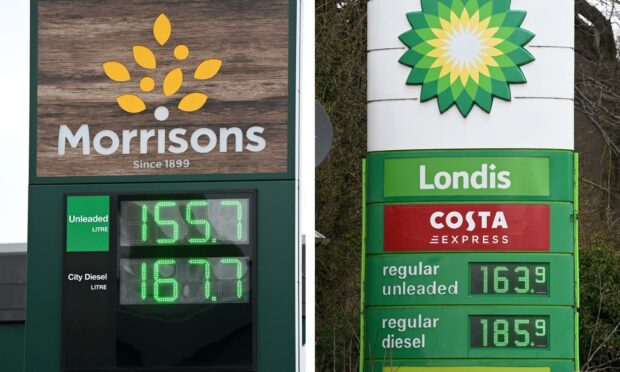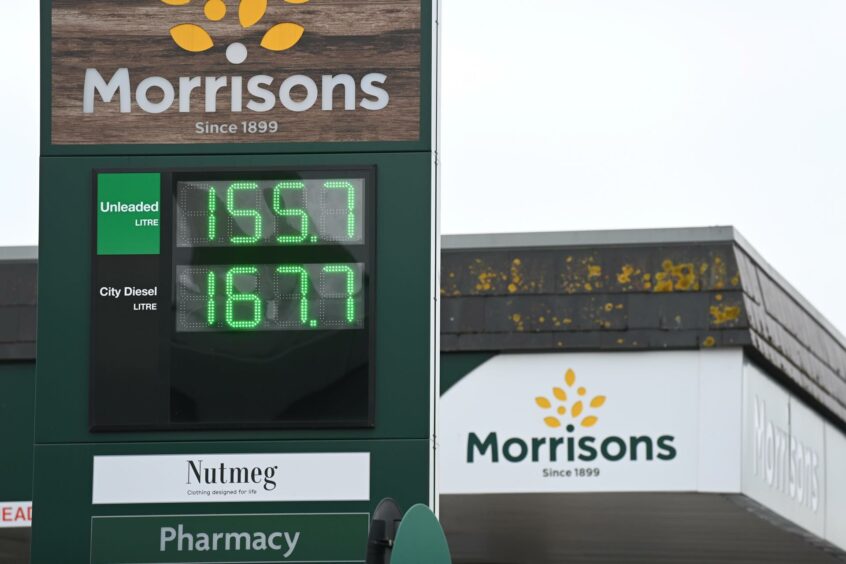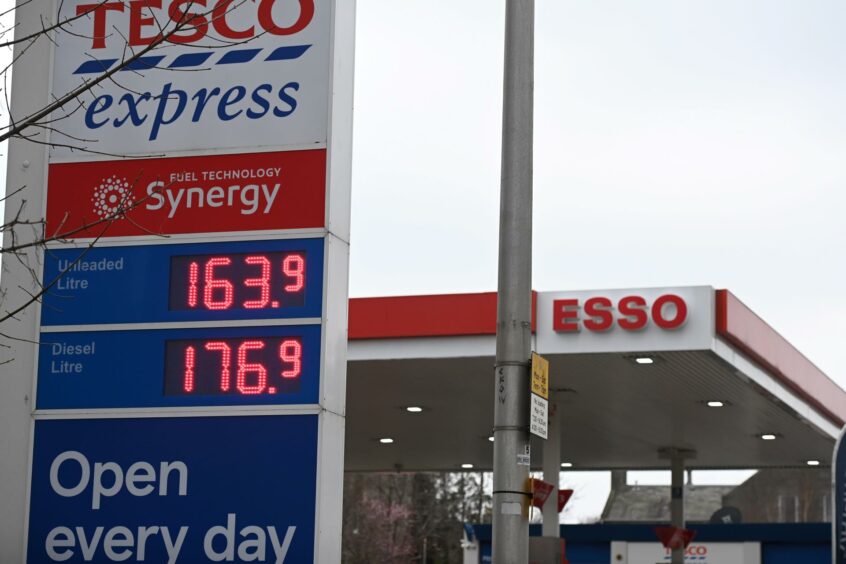Amidst the recent rise in fuel prices, huge price differences have emerged between forecourts very close together – including nearly 20p per litre on King Street in Aberdeen alone.
Motorists in Aberdeen can pay drastically different prices for fuel at forecourts just a mile away from each other.
The Press and Journal has taken a look at four pumps, all on King Street, to find out how prices compare, how they have changed over the past month – and how much they vary in price.
How do the King Street prices compare?
On Monday, the UK average price for petrol was 167.01p for petrol and 179.9p for diesel.
Why do fuel prices in the same area vary?
Supermarkets will often compete with each other on price or push independent forecourts to try and offer the cheapest option.
Petrol stations that are an “excessive” distance from fuel terminals, usually in rural locations, often have to pay more for petrol and diesel.
The government previously implemented a 5p rural fuel duty discount to benefit these communities.
What is causing rising fuel prices?
The price of petrol and diesel at the pumps is governed by wholesale fuel prices, which can be impacted by a number of factors.
Exchange rates and changes to global prices, and supply and demand, of crude oil can also lead to an increase in fuel prices.
While fuel duty at 57.95p per litre and VAT also make up the cost of fuel, these prices do not change at the same pace.
Last week, Chancellor Rishi Sunak announced a fuel duty cut of 5p per litre with prices at forecourts expected to decrease.
RAC spokesman Rod Dennis said: “Unfortunately, wholesale fuel prices were already rising before the Chancellor made his announcement on fuel duty last week.
“This meant retailers were buying fuel in at a higher cost than they were a week earlier, which meant drivers may not have immediately and fully benefitted from the duty cut.
“Wholesale prices are currently falling, but it’s likely to be next week before we see what impact this has at the pumps.
“Had the chancellor instead cut VAT on motor fuel last week, drivers would have seen an immediate and guaranteed reduction in their fuel bill next time they visited a petrol station.
“As things stand, drivers remain entirely dependent on what is happening on the wholesale market and the extent to which retailers are able or willing to pass on savings they make.”




